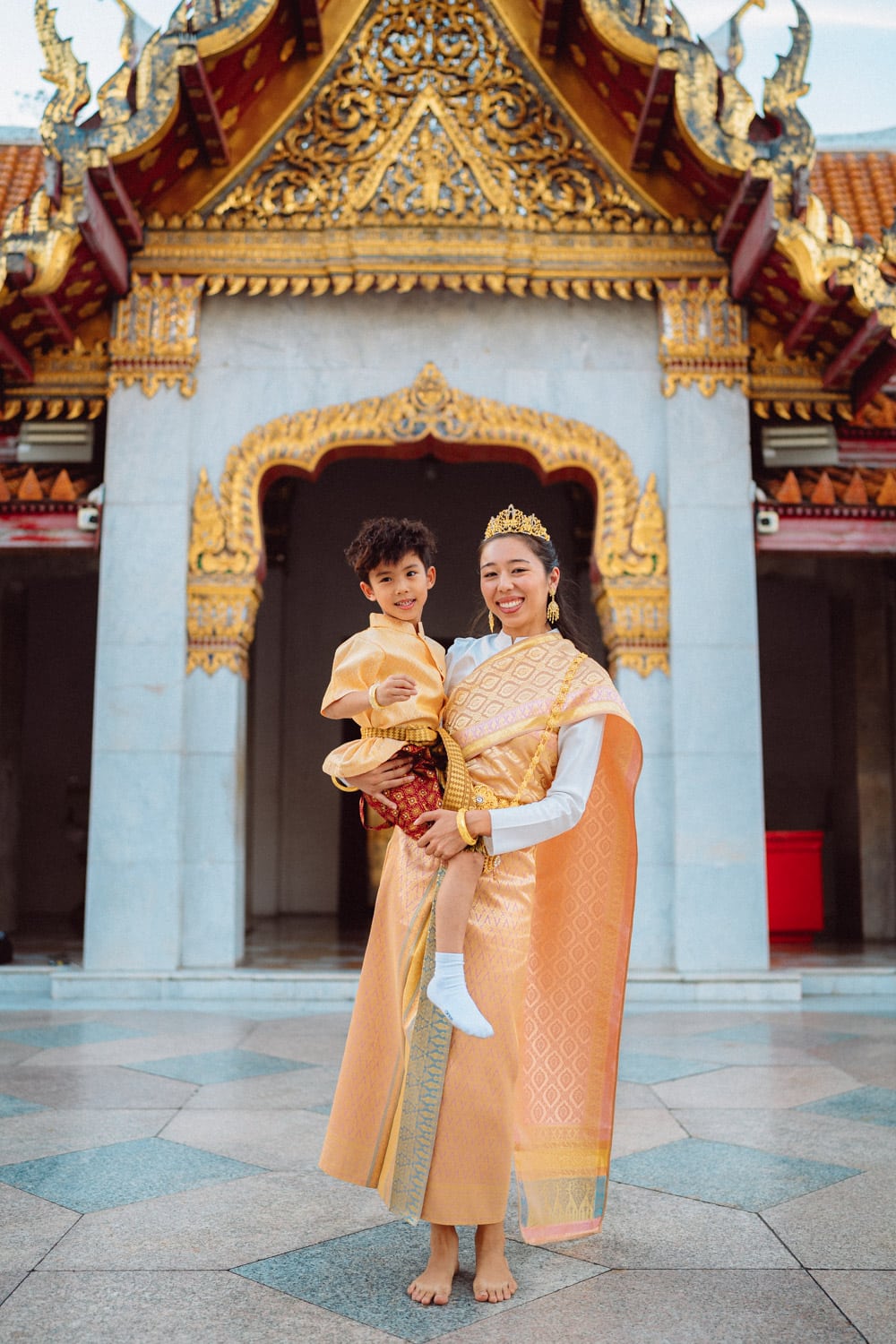The History and Significance of Traditional Thai Outfits
Traditional Thai outfits are more than just garments; they are vibrant reflections of Thailand’s rich cultural tapestry and history. These exquisite ensembles have evolved over centuries, influenced by the nation’s geography, religion, and interactions with neighboring countries. Their designs, colors, and intricate patterns tell stories of craftsmanship and identity, making them an integral part of Thailand’s cultural heritage.
Early Origins and Practical Beginnings
In ancient times, Thai clothing was shaped by practicality and the tropical climate. Early garments were made of natural fibers, such as cotton and silk, which provided comfort in the heat. Both men and women traditionally wore a simple piece of cloth called the “pha nung,” which was wrapped around the waist and extended down to the ankles. This basic attire was later adorned with elaborate patterns and accessories as Thai society progressed.
The Influence of Buddhism on Thai Attire
The influence of religion, particularly Buddhism, has played a crucial role in shaping traditional Thai outfits. Buddhist monks’ saffron robes inspired the use of specific colors and draping styles in everyday and ceremonial attire. Additionally, the concept of modesty in Buddhist teachings influenced the elegance and structure of traditional Thai clothing, where layers and wraps added grace to the designs.
Royal Courts and Fashion Evolution
Royal courts significantly impacted the evolution of Thai fashion. During the Ayutthaya and Rattanakosin periods, the ruling classes embraced ornate fabrics, luxurious silks, and intricate embroidery. Each era left a distinct mark on Thai clothing, introducing unique styles such as the “chut Thai phra ratcha niyom,” or royal Thai attire. These garments were often adorned with gold threads and precious jewels, signifying wealth and power.
Iconic Elements of Traditional Thai Outfits
One of the most iconic pieces of traditional Thai clothing is the “chut Thai,” a term that broadly translates to “Thai outfit.” For women, it often includes a fitted blouse, a silk wrap skirt called “pha sinh,” and a shawl or shoulder cloth known as “sabai.” Men’s attire typically consists of a shirt and “jong kraben,” a piece of fabric wrapped around the lower body. Each element of the chut Thai varies by region, occasion, and social status, showcasing the diversity within Thai culture.
Regional Diversity in Traditional Thai Clothing
Traditional Thai outfits also serve as a medium to express regional identities. In northern Thailand, Lanna-inspired garments feature subdued colors and intricate patterns, while in the south, brighter hues and lightweight fabrics are common. The differences highlight the unique customs and climates of each region, emphasizing Thailand’s cultural diversity.
Traditional Attire in Festivals and Ceremonies
Festivals and ceremonies offer a vibrant showcase of traditional Thai clothing. During Songkran, the Thai New Year, people wear brightly colored outfits as they celebrate with water fights and rituals. Loy Krathong, the festival of lights, sees participants dressed in elegant traditional attire as they release floating lanterns onto rivers. Weddings, too, are a spectacle of Thai fashion, with brides and grooms donning elaborately designed costumes that reflect their family’s heritage and social status.
The Art of Thai Silk and Craftsmanship
The craftsmanship behind traditional Thai outfits is remarkable. Handwoven silk, a prized material, is often used to create these garments. Thai silk is renowned for its luster and durability, with patterns passed down through generations of artisans. The meticulous process of weaving, dyeing, and embroidering these fabrics highlights the dedication and skill of Thai craftspeople.
Modern Adaptations of Thai Traditional Outfits
In modern times, traditional Thai outfits have adapted to contemporary fashion while retaining their cultural essence. Designers incorporate traditional elements into modern clothing, making them more accessible and appealing to younger generations. This fusion ensures that the heritage of Thai clothing remains relevant in today’s world.
Cultural Significance in Contemporary Life
Today, traditional Thai outfits are not confined to ceremonial use. They are increasingly being incorporated into casual wear and corporate events, reflecting a renewed pride in Thai culture. Schools often have “Thai Dress Days,” encouraging students to wear traditional clothing and learn about its significance. This helps bridge the gap between past and present, instilling cultural appreciation in younger generations.
Tourism and the Allure of Thai Attire
Thailand’s tourism industry thrives on its cultural richness, and traditional outfits play a pivotal role in creating immersive experiences for visitors. Many heritage sites and cultural attractions encourage tourists to wear traditional attire, enhancing their connection to the history and traditions of the region. The availability of Thai costume rental services further enriches this experience.
The Role of Accessories in Thai Costumes
Accessories play a vital role in completing traditional Thai outfits. Jewelry, belts, and headdresses are carefully selected to complement the garments. Gold ornaments, in particular, are symbolic of wealth and are often seen in wedding attire. These accessories not only enhance the beauty of the outfit but also carry cultural and historical significance.
Sustainability and Preserving Craftsmanship
As the world shifts towards sustainability, traditional Thai outfits and their handwoven materials offer an eco-friendly alternative to mass-produced clothing. Supporting local artisans helps preserve age-old techniques and ensures that the rich heritage of Thai craftsmanship is passed on to future generations. This sustainability also aligns with global movements towards ethical fashion.
Siam Crown: Your Gateway to Authentic Thai Clothing
Siam Crown offers a wide range of authentic Thai clothing for rent, making it easy for anyone to experience the beauty and tradition of Thai attire. From wedding costumes to festival outfits, each piece is crafted with attention to detail and respect for Thailand’s cultural heritage. Visit Siam Crown to explore our collection and embrace the charm of traditional Thai fashion. Whether for a special occasion or a casual cultural experience, wearing a traditional Thai outfit is a meaningful way to celebrate the spirit of Thailand.



